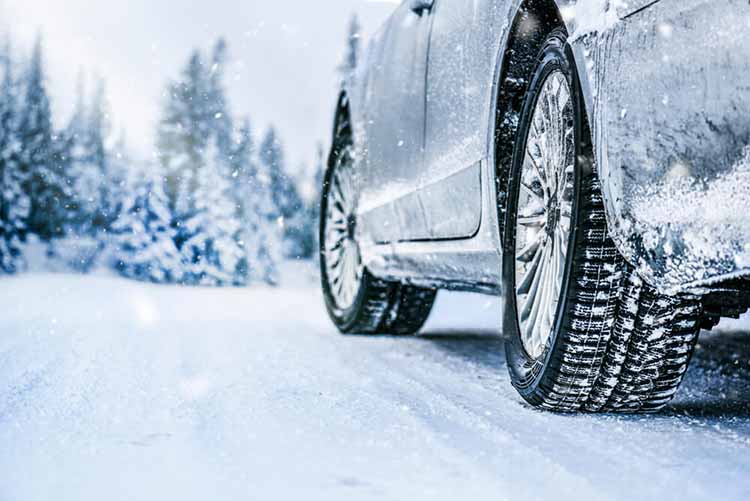When winter arrives, preparing your car for winter driving is essential for your safety. From checking coolant levels to keeping an emergency kit, following a winter checklist for vehicles ensures that you're ready for snow, ice, and freezing temperatures.
In this guide, we’ll cover winter car safety tips and how Delaware title loans can help in financial emergencies.
Winter Vehicle Checklist: 8 Steps to Stay Safe on the Road
1. Check The Coolant In Your Vehicle
Checking your coolant levels is one of the most important things to consider on your winter vehicle checklist when it comes to your car maintenance for winter. Make sure that you have enough coolant in your engine and that it is rated to withstand the temperatures in your area. When coolant freezes it expands, and this can damage your engine. So, make sure to start your winter checklist for vehicles with this step.
2. Check Your Battery
Your car battery requires more energy to start in extremely cold weather. The last thing you want while you’re trying to get to work on a freezing winter morning is for your car to not start. When you’re preparing your car for winter driving, it is a good idea to test the health of your battery with a battery load test. Make sure fluid is filled to the top of the cap and there are no leaks or cracks.
3. Fill Your Wiper Fluid
Bad weather makes driving in the winter difficult and dangerous. But winter driving becomes even more dangerous when bits of ice, salt, snow, or mud build up on your windshield and reduce your visibility.
This is why it is important to have plenty of freeze-resistant windshield wiper fluid so that you can keep your eyes on the road and stay safe while driving in the winter.
4. Replace Your Windshield Wiper Blades
Keeping your vision clear while driving is even more important during the winter. Your windshield wiper blades will get a lot of action this time of year, and it is important to make sure that they are up to the task.
Most windshield wiper blades do not have a lifespan longer than a year. It is likely that you will need to replace them soon anyway, so you might as well invest in some heavy-duty windshield wiper blades specifically designed for winter weather.

5. Inspect And/Or Replace Your Tires With Snow Tires
Driving on tires with worn treads during the winter is dangerous. These tires are more likely to blow out and you also run the risk of losing traction.
If you live in an area with frequent severe winter weather, it is a good idea to invest in a set of snow tires. These are made of sturdier rubber that is flexible and strong enough to keep you safe on the road.
6. Keep An Eye On Your Tire Pressure
Another item on the winter checklist for vehicles is to keep an eye on your tire pressure to make sure that they are properly inflated. Cold weather causes air to drain out of your tires, which can create a dangerous situation if you do not monitor your tire pressure.
Keep a tire pressure gauge in your glovebox and remember to check your spare tire as well.
7. Change Your Oil, Especially In Freezing Temperatures
The oil in your engine will get thicker during the winter months. This clogs up the engine and causes damage, making this one of the most important winter car safety tips. Many people recommend using a thinner oil as a way of preparing your car for winter driving. Consult your owner’s manual or check with a mechanic to determine the best oil for you.
8. Check Your Belts And Hoses
The belts and hoses that keep your engine running can be weakened by extremely cold temperatures. Make sure to check them frequently for any signs of damage. Replace any necessary parts as soon as you can.
While this takes us to the end of our winter vehicle checklist, it is important to do this checklist periodically. Look at this list as your winter car care guide If you remember to winterize your car by preparing your car for snow and ice, you are setting yourself up for success and avoiding finding yourself in an emergency.

Emergency Preparedness: Why Financial Safety Matters
Accidents happen and you can still find yourself in a dangerous situation even with the best planning and prevention. Keep essential winter car supplies in your car just in case something happens.
But ultimately, no one can predict when an emergency will strike, and it is important to be ready when it does. If a crisis strikes and you need to be financially capable of dealing with it, you can consider qualifying for a vehicle title loan from Delaware Title Loans, Inc.
How To Get A Title Loan?
The process of getting a vehicle title loan from Delaware Title Loans, Inc. is simple. To get started, simply submit an online title loan form to get connected to your nearest Delaware Title Loans, Inc. location. A representative will call you shortly after your submission to discuss the required items that you need to have and set up an appointment at a location of your choice.
You will need a valid state-issued photo ID, your car, and your lien-free car title. During the appointment, your vehicle will be inspected to determine its value. The loan representative will also review your documents and help you through the loan process. Once you have completed this process, and if you qualify, you can receive your loan on the same day or the following business day.
Stay Safe and Financially Prepared This Winter
The winter months are upon us and the roads are getting trickier to drive on. Make sure that you keep yourself and your family safe with these winter driving tips for vehicles. Maintain your vehicle and keep an emergency kit in your car with essential car supplies.
You can also be financially prepared for emergencies by making use of the quick vehicle title loan process in Delaware. Submit our online form today to find out if you qualify.
Note: The content provided in this article is only for informational purposes, and you should contact your financial advisor about your specific financial situation.






